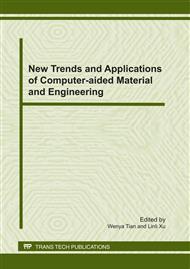p.560
p.565
p.570
p.576
p.581
p.586
p.591
p.596
p.601
Control Method to Data Transmission for Different Structure Network
Abstract:
There are many structure models in data network. To optical network, control method is important for different network. Optical fiber is the preferred medium for transmission for data rates larger than a few hundred megabits per second over distances more than tens of meters due to its near-perfect transmission properties, including low attenuation over a multi-terahertz bandwidth window, immunity from interference of most kinds, and requiring no maintenance over a very long life span. To date, no other technology has appeared on the horizon that can compete with these attributes. The transmission mode refers to the number of elementary units of information that can be simultaneously translated by the communications channel.
Info:
Periodical:
Pages:
581-585
Citation:
Online since:
January 2011
Authors:
Keywords:
Price:
Сopyright:
© 2011 Trans Tech Publications Ltd. All Rights Reserved
Share:
Citation:


